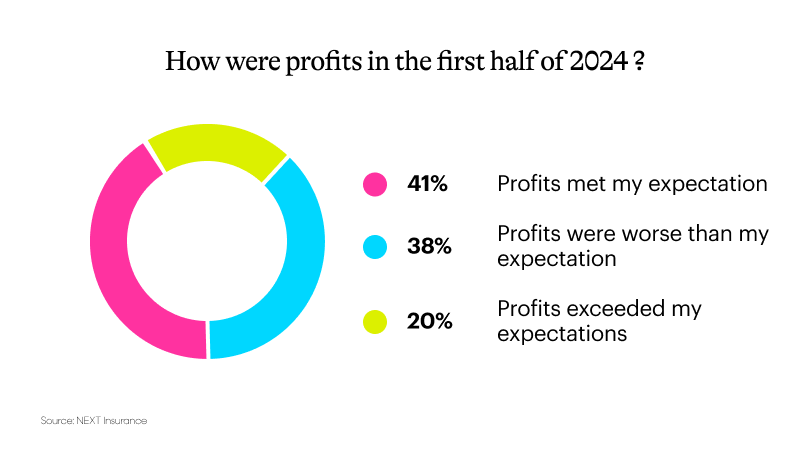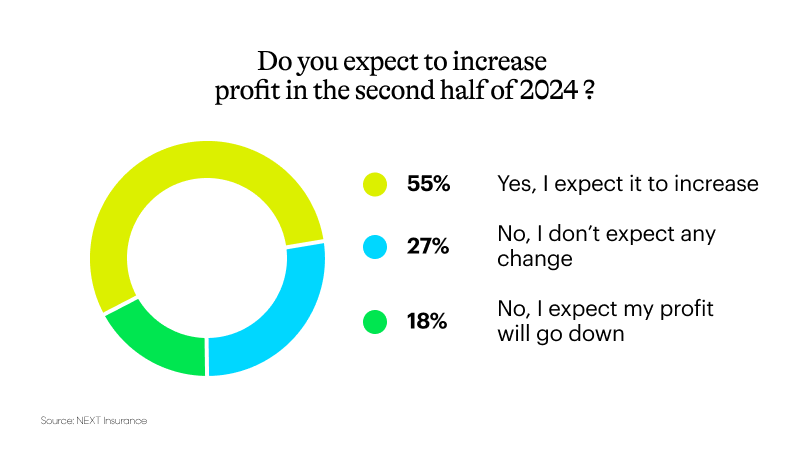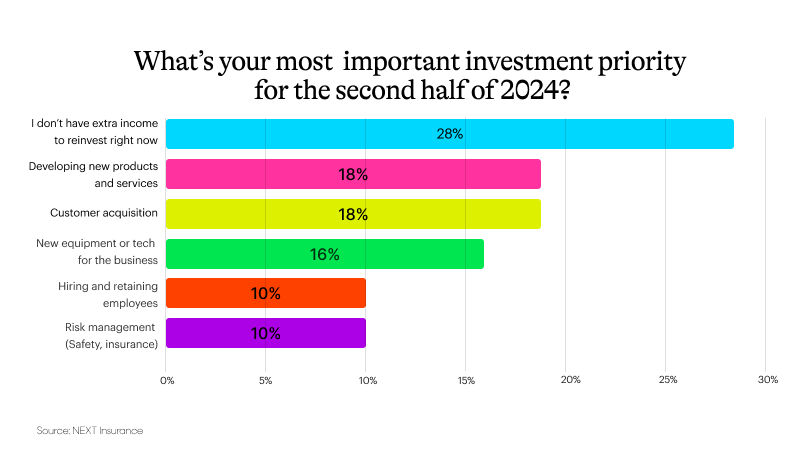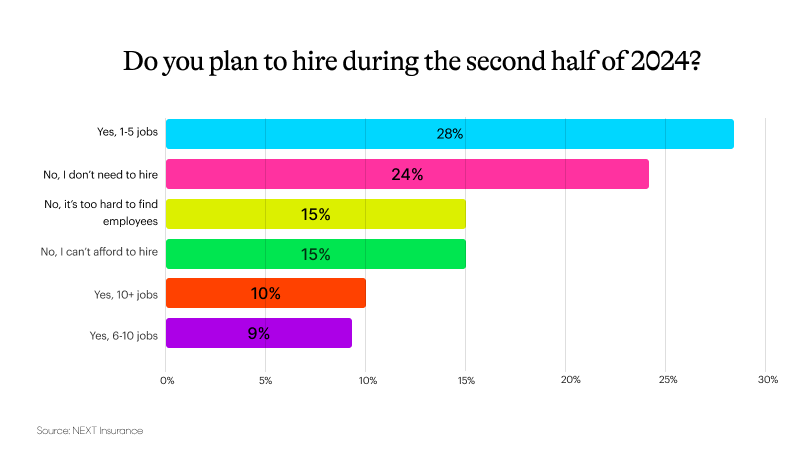55% of small business owners expect profits to increase in 2024

Ground Picture // Shutterstock
55% of small business owners expect profits to increase in 2024
A female owner of a small botanical shop smiling while on the phone taking an order.
High interest rates, inflation, student loan debt forgiveness, political turmoil and a solar eclipse — 2024 has already been an eventful year, but how are small business owners managing?
In July, NEXT asked 1,500 U.S. entrepreneurs aged 18-64 how profitability and business investment has been in the first part of the year, and what they anticipate as we enter the holiday retail season. Here’s what they said.
![]()

NEXT
Small businesses anticipate a stronger second half of 2024
Graph showing results for “How were profits in the first half of 2024?”
In the first half of 2024, business owners experienced economic fluctuations that could eat into profits. While inflation has cooled slightly, interest rates remained high, causing slower growth. Consequently, consumers, concerned about rising prices, pared back their spending on nonessential items and services.
When asked about their profits in the front half of the year, 61% of small business owners reported that profits either met or exceeded their expectations. 38% said that profits were worse than expected.
And they expect to finish the year strong.
55% of small business owners expect to increase their profit in the second half of 2024. 27% do not anticipate any changes to their margins, and only 18% expect their numbers to go down.

NEXT
Holiday sales peaks anticipated
Graph showing results for “Do you expect profits to increase in the 2nd half of 2024?”
Many factors could be attributed to this surge of optimism. Some small businesses, such as retailers, caterers, beauty professionals and cleaners, experience peak sales and bookings due to the holidays or other seasonality.
Other macroeconomic factors can affect business owners’ confidence. The Fed is expected to cut interest rates twice before the end of the year, making small business borrowing more affordable. Entrepreneurs could be in a better place to pursue growth opportunities they may have held off on last year when interest rates were not optimal.

NEXT
Business owners prioritize new products, services, customer acquisition — if they have the funds
Graph showing results for “What’s your most important investment priority in the 2nd half of 2024?”
Speaking of opportunities, 72% of small business owners will invest in their businesses. Here’s what they are prioritizing:
- 18% will invest in new products and services
- 18% will invest in customer acquisition
- 16% will invest in new equipment or technologies
- 10% will invest in hiring and retaining employees
- 10% will invest in risk management (safety and insurance)
However, over a quarter of survey respondents (28%) said they don’t have extra income to reinvest.
While new products, services and customer acquisition are top of mind investments for small businesses, risk management remains low on their list. This is consistent with previous NEXT survey results and the lack of education surrounding risk and insurance. (40% of business owners say it’s more stressful to understand insurance than taxes.)

NEXT
Over half of businesses don’t expect to hire for the rest of the year
Graph showing results for “Do you plan to hire during the 2nd half of 2024?”
Also low on investment prioritizations: hiring and retaining employees.
While 28% of small business owners expect to hire one-to-five new employees this year, 55% say that they will not hire due to not needing the help (24%), difficulty finding employees (15%) or not being able to afford hiring more staff (15%).
10% of small business owners plan to hire 10+ employees before the end of the year and 9% will hire six-10 new workers.
NEXT’s results align with trends reported by Intuit’s Small Business Index, which notes employment declines for the past four consecutive quarters. Small businesses now employ 357,200 fewer people than in Q2-2023, an annual decline of 2.78%.
The good news is that many small businesses can turn this trend around with new technology to help them run their business. (And 16% of the respondents will do so this year.) This could include accounting and mobile payment platforms, marketing and artificial intelligence tools, digital insurance, customer management and project management tools.
According to the U.S. Chamber of Commerce, four out of five businesses with very high technology use report growth in sales, employment and profits. They also note that 79% of high-tech adopters hired more workers as compared to only 62% of low-tech companies.
This story was produced by NEXT and reviewed and distributed by Stacker Media.
